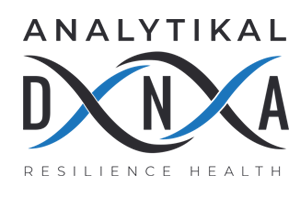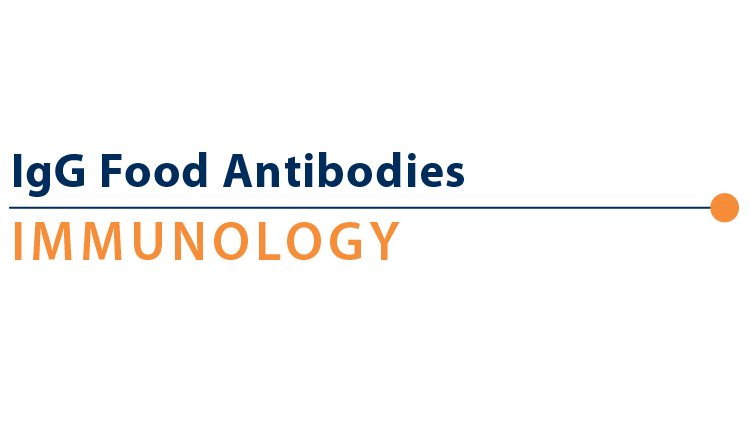Description
Important Prep Before Patient Takes Test
Certain medications and/or foods may impact test results. Please consult with your healthcare provider before stopping any prescription or over-the-counter medications. Genova never recommends that patients discontinue medically necessary medications or supplements in order to complete testing. There may be times when your healthcare provider prefers that you stay on a medication during testing in order to evaluate its effectiveness. The following medications may influence test results:
- glucocorticoids (e.g., oral prednisone, steroid metered-dose inhaler, cortisone cream)
- chemotherapy
- other immunosuppressive agents (e.g., Humira, Rituxan)
- NSAIDS (e.g., Ibuprofen, Naproxen, Aspirin)
- anticonvulsants (e.g., Carbamazepine, Valproate)
- Omalizumab is a monoclonal antibody designed to bind to free serum IgE, which may influence test results
- Heparin interferes with the measurement of tissue transglutaminase (tTG) antibodies on the celiac panel
Important: If a patient has a known IgE-mediated food allergy, Genova DOES NOT recommend exposure to the food that may cause a reaction. When testing for food antibodies, it is suggested that the patient eat a variety of foods for 2-3 weeks prior to testing (except for foods that are known to cause severe reactions). Doing so will help to ensure the presence of antibodies to problematic foods.
Antibody testing may be inaccurate if the patient has liver disease, severe kidney disease, protein-losing enteropathy from gastrointestinal tract damage, HIV infection, or other immunodeficiencies. Results may be skewed in patients with rheumatological pathologies associated with the production of heterophilic antibodies such as rheumatoid factor (RF).
It is recommended that a child be at least 1 year old before testing for IgG antibodies. There is no age restriction for IgE testing.
Gain Insight into Symptoms Triggered by Food
The IgG Food Antibody Assessment (*not available in NY) is a blood test that measures antibodies to 87 commonly consumed foods. The panel also includes a total IgE measurement. The body can react to foods in many different ways. Adverse food reactions can lead to distressing symptoms and chronic health conditions. Often times it is unknown exactly which food(s) may be the cause and testing can help identify the problematic foods. Removal of the reactive foods often results in resolution of symptoms.
What is the difference between IgE and IgG-mediated reactions?
The key differences between IgE allergies and IgG sensitivities are summarized below:
| IgE-Mediated Allergies (Foods, molds, inhalants) |
IgG-Mediated Sensitivities (Foods, spices, vegetarian foods) |
| Immediate onset (minutes to hours) | Delayed onset (hours to days) |
| Circulating half-life of 1-2 days | Circulating half-life of 21 days |
| Permanent allergies | Temporary sensitivities |
| Stimulates histamine release | Activates complement Does not stimulate histamine release |
| Hives, stuffy or itchy nose, sneezing, itchy, teary eyes, vomiting, stomach cramps or diarrhea, angioedema or swelling, shortness of breath or wheezing, anaphylaxis | Gastrointestinal symptoms, headaches, joint aches, rashes, other vague symptoms |
When should testing for IgG Food Antibodies be considered?
Testing for adverse food reactions is useful for individuals who suspect that a food is responsible for causing their symptoms, but can’t quite identify which food(s). The presence of circulating antibodies may affect each patient differently. Circulating IgG food antibodies are not diagnostic for a specific condition, but indicate an immune response to that food. The immune response could be a normal response that would not necessarily cause symptoms. Therefore, test results should always be viewed in the context of the overall clinical picture. The role of IgG food antibody testing is still being researched, however, studies have shown the benefit of testing in certain conditions.1
Conditions associated with IgG food sensitivity
- Irritable Bowel Syndrome (IBS)2-4
- Major Depressive Disorder4
- Migraine headaches5-7
- Skin rashes such as eczema8
- Joint aches9
- Autoimmune disease10
- Crohn’s Disease11
- Obesity12
The “Leaky Gut” Connection
The presence of circulating IgG antibodies to foods may be suggestive of increased intestinal permeability, also referred to as “leaky gut syndrome.” When the tight junctions forming the barrier in the gut don’t work properly, larger substances can “leak” through, causing an immune response. 
Ordering the test
The IgG Food Antibody Panel can be ordered as a stand-alone test or bundled with other profiles. Often times, clinicians will bundle several smaller profiles in order to see a more complete picture of the patient’s immune-mediated response. Profiles that can be bundled include:
| Profile | Includes |
| IgG Foods | 87 foods plus total IgE |
| IgG Vegetarian | 21 foods plus total IgE |
| IgG Spices | 23 spices plus total IgE |
| IgE Foods | 19 foods plus total IgE |
| IgE Molds | 15 molds plus total IgE |
| IgE Inhalants | 16 inhalants specific to 18 North American geographic regions plus total IgE |
| Celiac and Gluten Sensitivity | Total IgA, tTG IgA, DGP IgA, EMA IgA, Anti-Gliadin IgG & IgA |
What advantage does the IgG Food Antibody test offer compared to other diagnostics?
IgG food antibodies can result in a delayed response to a food.1 Whereas IgE antibodies can result in immediate-hypersensitivity to a substance. It is generally easier for patients and clinicians to identify a food that causes an immediate response. A delayed-response to food may be more challenging to determine, and testing can be helpful. The IgG Food Antibody test assesses total IgG (1-4) versus only testing for IgG4. This offers a more complete assessment, however, IgG4 testing is available for clinicians interested in that specific component of IgG.
The body of scientific evidence continues to build regarding correlation with clinical symptoms and conditions for IgG testing (see conditions above). Furthermore, a study comparing methodologies showed that “IgG ELISA testing is more reliable and consistent than cell size testing for identifying food sensitivities.”21 Examples of cell size testing or cytotoxic testing include mediator release testing (MRT), antigen leukocyte antibody testing (ALCAT) and lymphocyte response assays.
Other types of adverse food reactions that are not mediated by the immune system are referred to as food intolerances. Food intolerances include lactose intolerance due to lactase enzyme deficiency in the gut; testing is available for suspected lactose intolerance. Testing is not available for all food intolerances. These include vasoactive amines like histamine and tyramine, food additives and preservatives (nitrites, sulfites, MSG, aspartame), salicylates, nightshades, lectins, FODMAPs, oxalates, etc. Since testing is not available for every type of adverse food reaction, the elimination/rechallenge diet remains the gold standard for identification of symptom-producing foods.
Genova’s Methodology
IgG Antibody Testing
In testing food antibodies, Genova uses the sandwich ELISA method to offer semi-quantitative serum levels of IgG antibodies to foods. The relative degrees of IgG present for each food are reported using a semi-quantitative level:
- negative (none detected)
- VL (very low)
- Low (+1)
- Moderate (+2)
- High (+3)
In making these assessments, Genova looks at partial proteins, known as epitopes, in order to assess IgG antibody responses. Epitopes are designed to reveal that portion of the protein which most defines the specific food. There are no standardized, FDA-cleared laboratory assays for the detection of IgG antibodies to food antigens available in the US market. Genova uses commercially-prepared antigens for the IgG food antibody assessment. Levels of IgG reactivity are standardized to World Health Organization International Standard: Immunoglobulins G, A and M, Human Serum NIBSC code: 67/086.
IgE Antibody Testing
Genova utilizes the FDA-cleared Siemans Immulite® 2000 Total IgE and 3gAllergy Specific IgE Universal Kits. Immulite® 2000 Total IgE is a solid-phase Chemiluminescent assay. Immulite® 3gAllergy Specific IgE is a solid phase, two-step, chemiluminescent immunoassay that exploits liquid phase kinetics in a bead format. Siemens proprietary liquid allergens are the key to making IMMULITE® 2000 Immunoassay allergy tests sensitive, specific, and reliable. The soluble polymer/copolymer support for the allergens increases the number of binding sites and their accessibility to allergen-specific IgE antibodies. Enzyme-enhanced chemiluminescent signal detection provides increased sensitivity and the proprietary wash technique enhances specificity.
What can clinicians and patients expect from IgG Food Antibody testing?
In general, clinical management of the patient with food sensitivities involves elimination or rotation of the highly reactive food(s). Often times, clinicians and patients notice improvement of symptoms after diet modification. Patients may be able to tolerate the food in small amounts, without symptoms, after several weeks or months of elimination. Increased intestinal permeability (leaky gut) may simultaneously be addressed with diet, botanicals, and nutraceuticals, as well as modifying the contributing factors.



